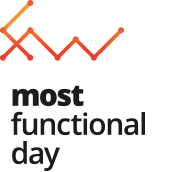N2O 
Erlang Web Stack
Maxim Sokhatsky
Why N2O?

Micro REST
Python Flask
Ruby Sinatra
PHP Silex
Scala Scalatra
Concurrency in Mind
Ruby Celluloid
PHP React
PHP phpDaemon
Java+Scala Play Akka
SPA
Angular Meteor Ember
Chaplin Brunch
Knockout React D3
Backbone jQuery
Functional DSL
Scala Lift
Erlang N2O
Haskell BlazeHtml
OCaml Ocsigen
F# WebSharper
Clojure
Laser Enlive
Compojure Ring
Hiccup ClojureScript Om
http-kit aleph noir
Elixir Weber
Erlang ChicagoBoss
DTL Engine
Database Connectivity
PubSub
Ruby on Rails like
Nitrogen
N2O ~2000 LOC
One Process per Connection
Binary Page Construction
Zero Bridge
GProc Pub/Sub
WebSockets, KVS DB, Shen
Tuned Layers
Layers Performance
components TCP conn (K)
PHP5 FCGI Simple Script <?php ?> 5
Nitrogen No session, No DSL, DTL 1
N2O Sessions, DSL, DTL 7
N2O Sessions, no DSL, DTL 10
N2O No Sessions, no DSL, DTL 13
On same machine
raw webserver performance
measured with wrk: NGINX -- 60K
Cowboy -- 30K
N2O Sessions, DSL, DTL 7
N2O Sessions, no DSL, DTL 10
N2O No Sessions, no DSL, DTL 13
Measuring Tools
httperf 10K 3623.50 200
siege 1K 884.51 430
Decreasing Latency
From 2x to ∞
Deliver HTML ASAP
Deferred JavaScript delivery
after WebSocket
connection established
Dynamic HTML cow

Static HTML nginx

SPA and DTL
Render
$(
'#temp563149'
).bind(
'click'
,
function anonymous(event)
ws.send(Bert.encodebuf({
source: Bert.binary(
'temp563149'
),
pickle: Bert.binary('g2gCaINoAmgEZAA...'),
linked: [ Bert.tuple(Bert.atom(
'user'
),
utf8.toByteArray($(
'#user'
).val())),
Bert.tuple(Bert.atom(
'pass'
),
utf8.toByteArray($(
'#pass'
).val())) ]
}));
});
Elements
Plug your JavaScript controls
and talk with them using BERT
through WebSockets
Actions
Client Updates are sent as Actions
which are evaluated as JavaScript strings
wf:wire(#alert{text="Hello, World!"}).
Element render could create Actions
Action could include rendered Elements
Triggered Action may send Events
JS Compiler 200 LOC
Preserves Semantics
-compile({parse_transform,shen}).
M = lists:foldl(fun(X, Acc) -> Acc + X end, 0, [1,2,3,4]),
$ erlc sample.erl
m = [1,2,3,4].reduce( function(x,acc) { return acc + x; }, 0);
1. Human Readable Output
2. No Runtimes
3. Strong Dynamic Typing
4. Compact Language, Sane Syntax
Synrc Shen, JScala [1,2,3,4]
CoffeeScript, LiveScript [1,2,4]
TypeScript [1,2,3]
Ur, Fay, Roy, Elm, Haxe, F*, WebSharper [3,4]
ClojureScript [4]
OberonJS [1,3,4]
Wisp [1,2,4]
ClojureScript [4]
OberonJS [1,3,4]
Wisp [1,2,4]
Why Erlang to JS ?
Validation Rules
Business Rules
Prototyping
Static Content Generation
Single Environment
SPA React ERL
SPA React JS
Erlang AST CMPTBL
Brace (Joxa /w Erlang AST)
Elixir, Erlang
Synrc Shen JavaScript Compiler
can handle each Erlang language that
compiles to Erlang AST*
DTL Sample
main
() ->
Body =
wf
:
render
(
body
()
)
,
[
#dtl
{
file =
"login"
,
bindings
= [ {
body
, Body }
]
} ].
body
() ->
[
#span {
text
= "Login: " },
#textbox
{
id
=
user
},
#span
{
text
=
"Pass: "
},
#password
{
id
=
pass
},
#button
{
text
= "Login"
,
postback =
login
, source =
[
user
,
pass
]
} ].
event ( login ) -> wf : user ( wf : q ( user ) ), wf : redirect ( ).
Idiomatic Chat
N2O in Elixir
defmodule Sample.Index do
def event(:init) do :wf.reg(:room) end
def event({:chat,pid}) do pid <- {:message, :wf.q(:message)} end def event(e) do :wf.info('Unknown Event ~p',[e]) end def main() do :dtl.new(file: "index", bindings: [title: "Elixir N2O", body: body()]) end def body() do { :ok, pid } = :wf.async(fn() -> loop() end) [ :div.new(id: :history),
:textbox.new(id: :message),
:button.new(id: :send, body: "Chat", postback: {:chat,pid}, source: [:message]) ] end
def loop() do receive do {:message, message} -> :wf.insert_bottom(:history, [ :span.new(body: message), :br.new() ]) :wf.flush(:room) unknown -> :wf.info('Unknown Looper Message ~p',[unknown]) end loop() end end
N2O in Joxa
JSON
proplists <-> JSON 243x
Library Type Enc Dec
------------- ------- ------ -------
jsonx C NIF 1048 998
jiffy C NIF 2652 2234
yaws2 Erlang 14208 12653 Xen
jsonerl Erlang 14549 14899
mochijson2 Erlang 16787 16512
jsx Erlang 27188 18333
jiffy C NIF 2652 2234
yaws2 Erlang 14208 12653 Xen
jsonerl Erlang 14549 14899
mochijson2 Erlang 16787 16512
jsx Erlang 27188 18333
JSON PT
proplists <=> #rec{}
REST Sample
KVS REST API
POST/PUT kvs:add(#user{}).
DELETE kvs:remove(user,2).
PUT/PATCH kvs:put(#user{id=2}).
GET kvs:entries(Feed,user).
GET kvs:get(user,2).
GET kvs:all(user).
Events
From JavaScript
Everything is sent as an Event
Postback event/1
Control control_event/2
API api_event/3
Events Nature
Events are enveloped by BERT
as #ev{}
You can define your own entry points
Postback Events
Create Page Logic with
Postback Events event/1
main() -> [ #button { postback = login } ] .
Control Events
Handle Data from Controls with
Control Events control_event/2
render_element( E = #myelement { } ) -> do_render( E ).
... when you cteate your own Elements
